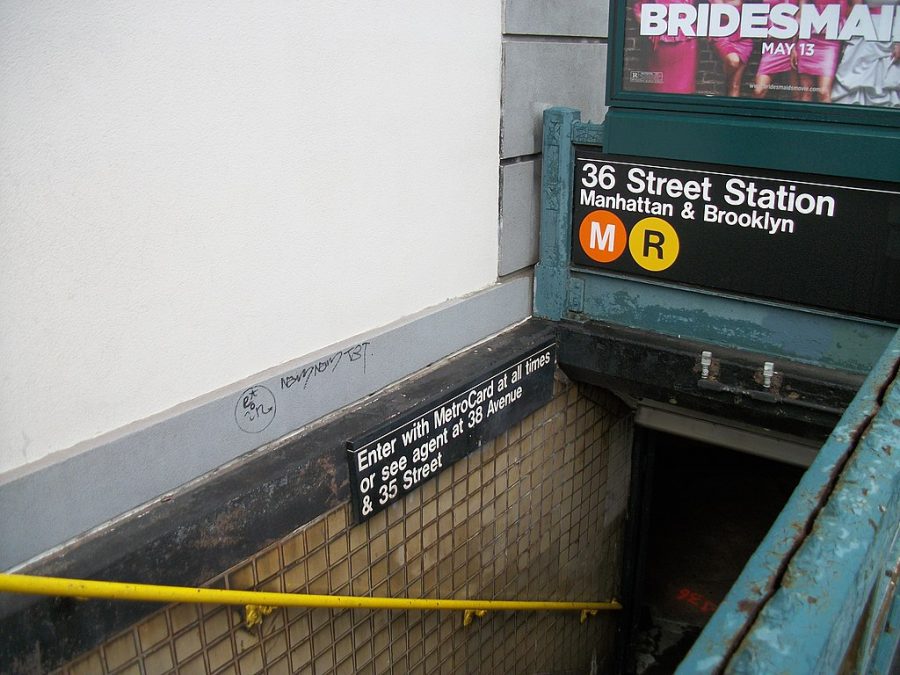Brooklyn subway shooting calls for more safety measures
May 7, 2022
In New York City, the Metropolitan Transportation Authority system is perceived as a fast, affordable and convenient transportation method used daily by millions. Yet, the Brooklyn subway shooting on April 12 raised considerable doubts about its safety.
The Brooklyn subway shooting reminded New Yorkers that their safety can be easily disrupted and raised several crucial questions regardless of the stations’ security.
The incident left 23 people injured and Frank James, the 62-year-old suspect, managed to escape from the scene despite the increased New York Police Department presence at all the stations.
James, who has a significant criminal history, left them his credit card and van keys, helping the investigators track him. It is difficult to imagine how much time the NYPD would spend searching if it took them more than 24-hours with such considerable clues.
It is questionable how someone can enter a train station with a gas mask and a gun and go unnoticed.
The stream of criticism on social media revealed that citizens have concerns about the NYPD’s work, which has recently received additional funding from taxpayers’ money and an increased presence in public places.
City Limits emphasized that the extra thousand officers assigned to duty at subway stations are the largest law enforcement presence in the Transit Bureau history. Yet, the Brooklyn subway shooting was still not prevented, people were injured and a criminal escaped the station unnoticed.
The city administration developed emergency measures to enforce station security in response to the event.
New York City Mayor Eric Adams said that metal detectors are to be used in subway stations. The public safety department is to select the type of devices and the NYPD will be responsible for monitoring them.
Increased law enforcement presence and detectors’ work must be combined with better CCTV cameras and a more consistent security system.
Another aspect of decreasing a shooting probability is to consider the mental health conditions of criminals, as they often display deviant behaviors long before becoming violent. The city administration addressed it by pointing out that since the healthcare system is less overwhelmed by the COVID-19 pandemic it can now allocate more sources to psychiatric treatment.
These initiatives are expected to be more efficient than giving more funding and power to the NYPD.
The increase in police presence is not worth the investment because most of them have no specific instructions regarding checking the suspicious citizens or addressing the safety risks on stations.
Furthermore, the Brooklyn subway shooting displayed the inefficiency of police officers. Not only did the criminal manage to bring a weapon to a train, but he also showed that criminals are not afraid of law enforcement guarding the subway system.
An important detail about law enforcement’s increase is that when a person sees a group of officers, they suspect that a criminal is nearby and feel rather anxious than safe.
Moreover, racial profiling, overuse of power and oppression are the inevitable outcome of police expansion.
The city needs to develop complex strategies to increase its safety by simultaneously addressing the causes and consequences of crimes. Moreover, stations’ cameras and surveillance systems are known to not work to their fullest and the administration must fix them.
Although law enforcement–related updates are prevalent, communities and civic organizations can also impact the problem.
Social services can also participate by providing people in need with additional support to prevent them from committing crimes. Such programs’ implementation is the most peaceful solution, which combined with psychiatric healthcare assistance and police work, can make all New York’s districts safe.
However, the scope of issues is too broad to eliminate, and even a well-financed services structure will need years to make an impact. The risks are too high to give them that much time, and it explains why the New York administration preferred to use quick and actionable measures.
As it always happens after a mass crime, the city’s police services and the government will prioritize improving the weak points the accident shed light on.
MTA Chairman Janno Lieber said that Adams aims to make subway stations safety the most important problem to address during his mayoralty.
Let’s hope that New Yorkers soon feel less anxious about entering a subway station.







